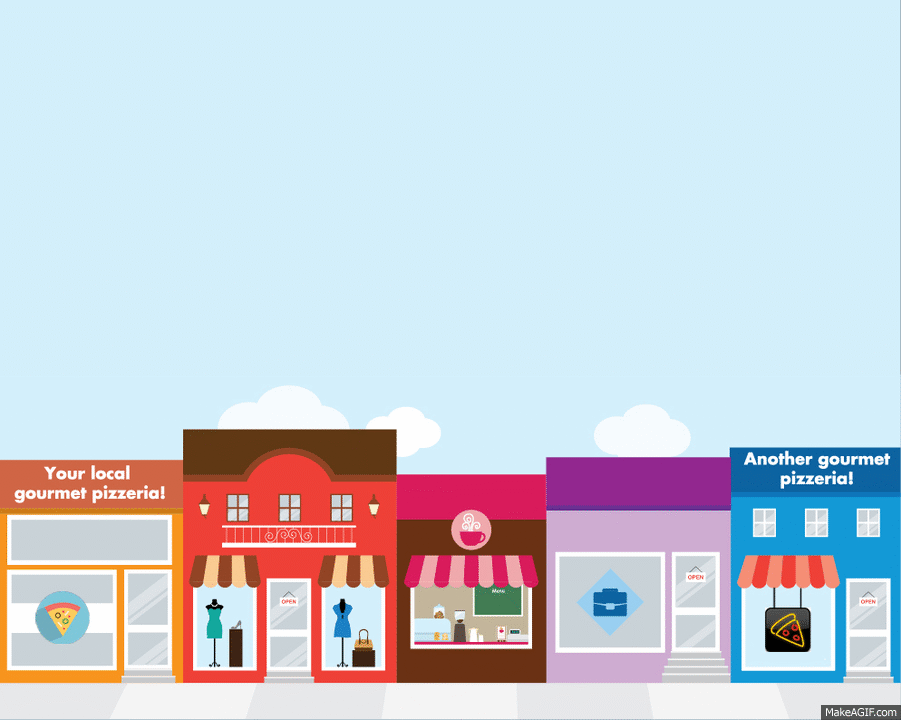Brand Personality, What Is It?
We often hear the phrase "Brand Personality" thrown around by marketing gurus - but what really is it? Is it meant for big brands using agencies? How can small business create one? All great questions.Simply put, brand personality is how your business and the associated products or services, are perceived, consumed and engaged with by the general public. Notice that I did not just say "customers"? Because your brand personality spans beyond customers and becomes a reality of all audience members aware of it, whether they use it or not.
 |
| Remember the PC vs. Mac personality commercials? |
According to one of the biggest "rockstars" of branding in our day and age, Seth Godin, every brand is a story. It cues emotions, expectations, social situations and induces our own inner memories with the brand/product in question. Below is a great two sentence summary which illustrates brand personality:
More than ever, we express ourselves with what we buy and how we use what we buy. Extensions of our personality, totems of our selves, reminders of who we are or would like to be. - Seth Godin
Our Own Brand Personality Prelude
I will share with you a brief background story on NR Digital Branding itself - somewhat of an intro (not meant to be self boasting) into this blog post. If you've browsed around our social media profiles and links you may have noticed the term "nemki" come up quite a bit. As a matter of fact my Twitter handle is @nemki, one of my more recognizable nicknames to those that do know me (interestingly, nemki also refers to a mythological thunder-bird creature in the Anishinaabe native language). It was the first ever email I used for gaming, forums, chat services, Yahoo GeoCities website builder (first ever web design dabbling!), and it marks the spark of my "digital" life from the late 90s/early 2000s.But why is it being used for business purposes?
Well I believe this to be the start of my digital passion and everything that has happened since, including the inception of NR Digital Branding. It is the personality that has developed over years that led to this career path and personal/professional involvement in the digital landscape. Additionally the story associates the level of commitment NRDB has to always providing the best digital experience for all customers, local audience and online community due to that passion. The same way that many Canadian small business have a story of their own; stories of passion, dedication and branding. What makes your business unique and how that uniqueness weaves into the service and/or product you provide as well as the customers that make it all worth-while.
Brand personality is a way for the customer to resonate with your business, to make a full emotional connection.
Why Tell Your Story?
Canada (more-so than other countries) is strongly established by small businesses. Imagine that within your local area you have a pizza store, down the street from the store is another local pizzeria store. Both of you sell gourmet pizzas, wings, bread-sticks, dipping sauces, provide a delivery service, etc.
Well, which one should a newcomer chose? Why would a customer come back?

This is where your story or small business uniqueness (the personality) can play a crucial role.
What makes a pizzeria gourmet? Usually some sort of "secret" or "home-made" sauce. Maybe your pizzeria bakes using a stone oven, or uses an old family recipe from Italy. Perhaps it has an unmatched dinning experience in the pizzeria itself which draws a regular nightly crowd. It is something that differentiates you from ALL other pizzerias (regardless of location). While they too can have a specialty sauce or unique toppings, it does not taste quite the same as yours. The same would apply to their loyal customers: they would prefer that sauce over yours and that is what allows your business to differentiate itself.
Think of grandma's home-made pie; you can buy a pre-cooked one and bake it until its ready but it just doesn't have the same aroma, taste and goodness to it. Why can't your home-made gourmet pizzeria live up to that name? Especially if it has a special secret sauce that makes it delicious! Maybe even elicit a similar response to the one in the image below (we do not recommend you try this at home!):

I reference a pizzeria as an example but this applies to all industries and types of small business organizations. If your small business has a great story to tell and can make the customer a part of that story, it will create a foundation for long-term relationship between brand, perception and customer.
How To Tell Your Story
There was an article published on Forbes a couple of years ago, right at the "rise" of content marketing that brought a point which is very important to this practice to this day:Brand stories are not marketing materials. They are not ads, and they are not sales pitches. Brand stories should be told with the brand persona and the writer’s personality at center stage. Boring stories won’t attract and retain readers, but stories brimming with personality can. - Susan Gunelius, ForbesThe first thing that comes to mind of storytelling is the traditional list of sequential milestones. For example:
- established in 1977
- incorporated 1980
- introduced new menu 1989
1. Make it Customer-Centric
Stories always involve characters, and what better way to resonate with your customers than to make them the main character of your story? While this sounds hard, it is not impossible. Think about some of the most recent "big brand" campaigns that were centered around the customer:- Lays chips flavour challenge where users submit flavour ideas and the company sells the most popular selections for a limited time
- Coca-Cola putting names on soda cans/bottles to make coke buying about the person, not necessarily the drink itself
2. Participate Locally
Majority of small businesses are tied to a location (or more than one). Whether you have a storefront or work from an office (or from home), all businesses have somewhere they belong. It is imperative to be involved in your community to some extent.
Having collaborated with dozens of small business thus far, it is evident that majority of them are involved in their community. From local hockey team sponsorships, food drives to having a group of team members run a charity marathon. In all instances the organization and it's employees were doing this to help those in need or support their community.
However, few had actually mentioned their involvement anywhere. This type of local engagement can have a huge part in building up your brand's DNA both internally (employees) and externally (customers). You do not need to have fancy press releases or news stories written in the local newspaper (although it wouldn't hurt) each and every time. You simply need to snap a photo, share it with others, include it in your messaging and get your employees to participate in the share culture. You will be amazed at how engaged your brand will become.
Interestingly, according to a blog published on American Express small business blog the more local small business prosper the more they give back:
It’s not just about the economy: Research shows that vibrant local business communities lead to more charitable giving in a community and more walkable neighborhoods with unique character, according to Michael H. Shuman, an economist and author who specializes in community economics. - Kelly Spors
3. Be Genuine
"Corporate speak" as I refer to it is better left off the web and anything facing the customer really. In order to establish any sort of personality your brand has to establish a voice of it's own. Some brands have experimented with using slang terminology to resonate with their community, others simply tell it as is. Other use fun, interactive storyboards to guide the reader on a journey. Remember us mentioning the corporate timeline above? We'll take a look at Moz's timeline and how they made it fun, interactive and personal (use of their mascot and employee photos - see screenshot below).
One of my personal favourites is a local brewery here in Ontario: Steam Whistle Brewing. They cover everything about the brand: from the founder's original dreams long before the brewery became what it is today to the reason they chose that specific name, check it out here. Nothing fancy, but it gives meaning to the beer for all lovers of local brews.
So, now that we've covered the basics of brand storytelling do you know what is your business' brand personality? If you're not sure, are you going to work on one?









